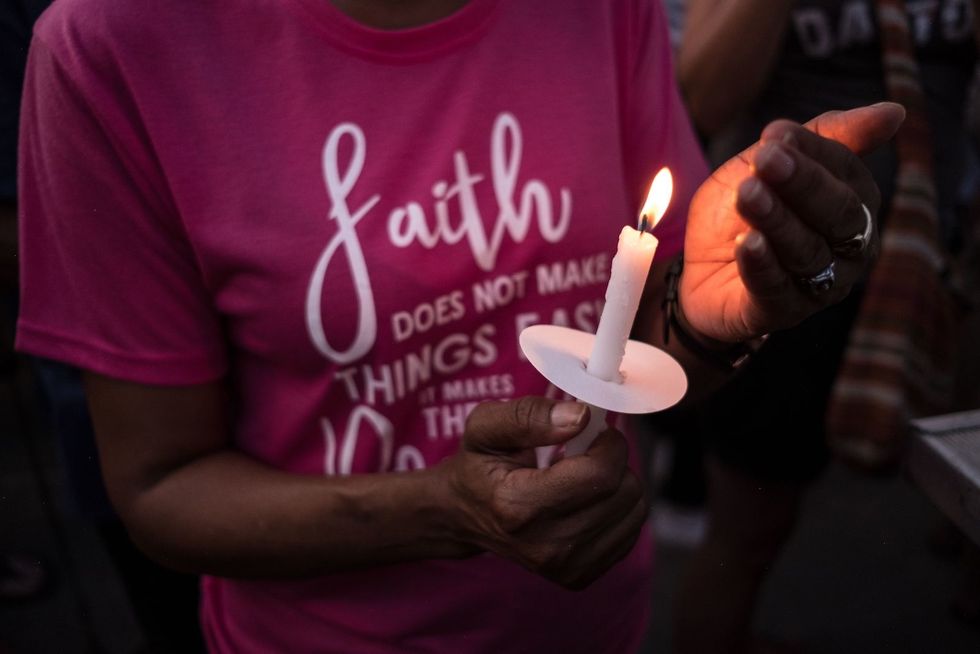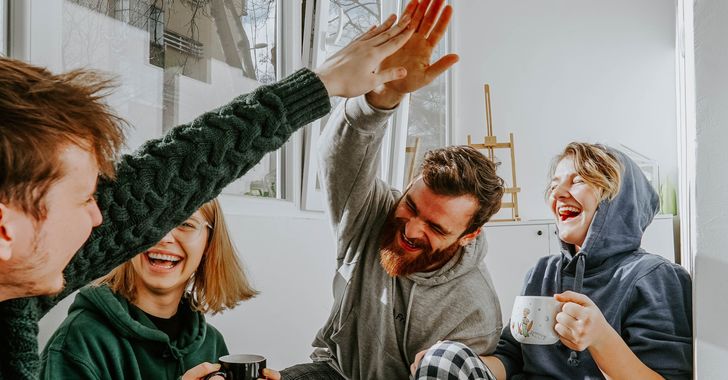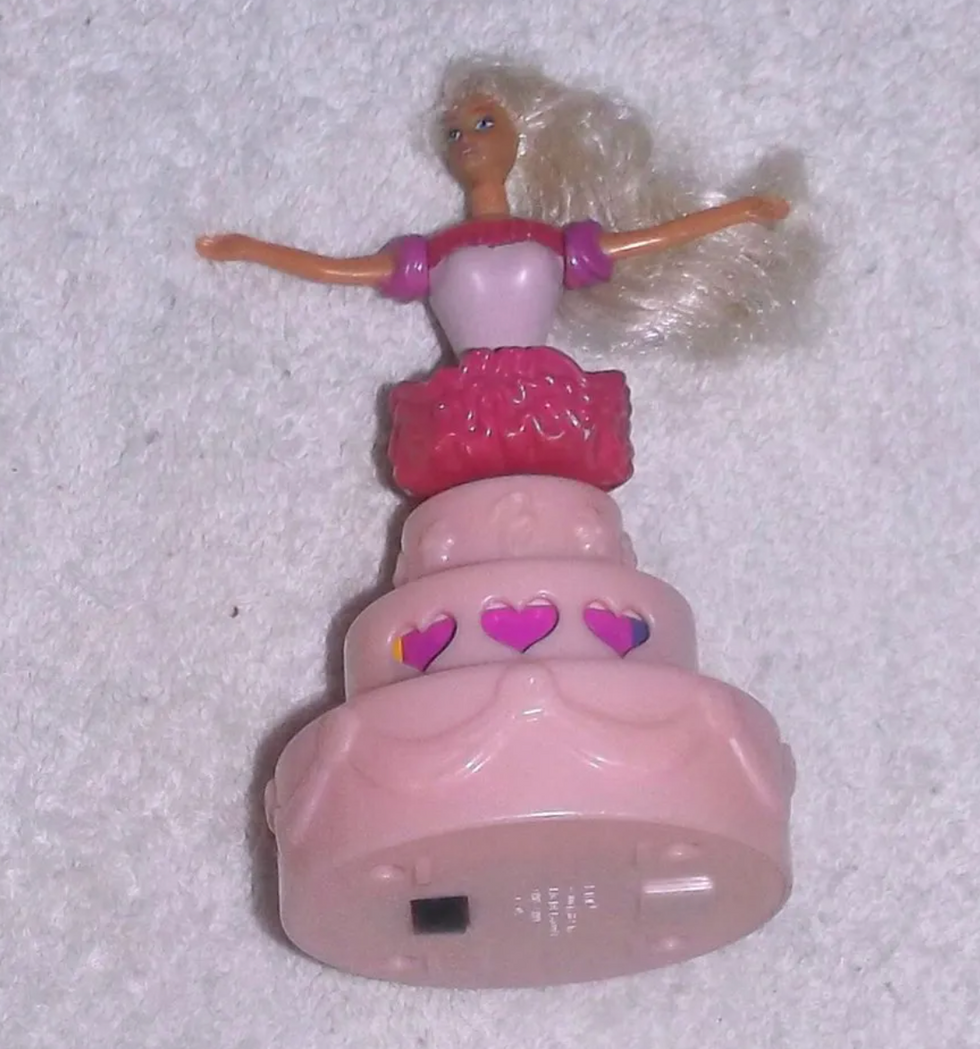They don't.
If you want to address issues like America's mass shooting epidemic or annual 20,000+ gun-related suicides, thoughts and prayers won't work.
Here's what happens when a country prioritizes prayer first and foremost.

They don't.
If you want to address issues like America's mass shooting epidemic or annual 20,000+ gun-related suicides, thoughts and prayers won't work.
While we are all very dependant on technology, we are losing touch with humanity.
If we look back on how our ancestors lived we can sense a totally different lifestyle. If they could come back and live with all our technological devices they surely would think they are in a completely new alien world. They lived such a simple life without our devices that it seems as if centuries have passed by. In reality most of the discoveries were accomplished in the past twenty years. Indeed we have assisted a total technological distortion. This change in our lives was characterized by a myriad of technological innovations, due to globalization.
Globalization is a wide phenomenon caused by economical exchanges that happened between the XX and XXI centuries. All this has led to social, cultural, political, technological, and health interdependencies whose positive and negative effects have global relevance. Among the positive aspects of globalization we must highlight the speed of communication, the fast circulation of information, the opportunity for economic growth for nations that have long remained on the margins of the world economic development. Globalization is the result of an economic process, by which markets, production, consumption and ways of living and thinking are connected on a global scale, that is to a continuous flow of exchanges that makes them interdependent and tends to unify them. This process has been going on since 1980 and it has strongly accelerated with the Third Industrial Revolution.
But...we cannot understand the technological evolution, and the Third Industrial Revolution if we don’t take a step back.
The First Industrial and the Second Industrial Revolution are two very important moments in world history, because they changed not only the way of production, giving a turning point to the economy, but also many aspects of society. The First Industrial Revolution happened from 1700 to 1800 and it transformed the life of millions of people, the most important discoveries during this time were: the discovery of the steam engine by James Watt in 1778, which was considered one of the most important innovations; street lighting, the first photograph in 1825 and the first locomotive by George Stevenson in 1829. The Second Industrial Revolution started around 1870 until the First World War, it brought a new revolutionary transformation in people’s lives. Technological development is a notable cause and consequence of industrial development: steam was replaced by the internal combustion engine, powered by petrol and by the electric one. Electricity guaranteed night lighting, disrupting the rhythms of life in the cities, the improvement of the chemical industry is not of little importance, with its related repercussions on the textile industry and agriculture. The Third industrial Revolution differs from the previous ones because it is based on transformation processes of the production of goods which in Western developed countries involved social and economic aspects.
Starting from the mid 20th century technological innovations characterized the Third Industrial Revolution and it has triggered changes that have produced economic development and social progress, the phenomenon started at the end of the Twentieth century and it spread at first to some powerful countries like China, India, and the United States. Now it is widespread all over the world. Unfortunately, some countries are still not entirely developed for using or having these technologies. This brief excursus wants to highlight how life has changed during the years. One of the first important innovations, that must be cited and that changed the world, was the Printing Press in 1455 which brought the diffusion of books at a fast pace, followed by the steam engine, electricity and finally, the means of mass communication, which is the process of exchanging information through mass media.
Technology led to many advantages and let us see the world in a different way; in the late 1960s Internet revolutionized communications allowing different computer networks to interconnect, indeed, it actually interconnects the whole world. Internet allows us to connect directly from our telephone device to the surrounding world. We are able daily to read in real time all the most important news from all over the world, and be connected every minute 24/7. Social media like Facebook, Instagram, and Twitter enable us to relate and connect with friends and relatives that live on the opposite side of the world in real time. It also enables us to connect and interact with famous people, to comment, and share news. Internet has revolutionized our lives making it in some cases, way better, let's remember the chance to call and see people in video calls in distant countries, like Australia, America or Africa, thousands of kilometers away.
But are we sure that internet brought only positive effects?
Internet made our life easier and better but at the same time it pushed us away. We became less social, we have more virtual friends and less social relationships. Love letters became old fashioned, and were replaced by cold and indifferent emojis. Adults live in symbiosis with their cellphone, and if by any chance they forget it home, it becomes a real tragedy, because we cannot live without it. While we are in line at the supermarket, at the bank or at the post office, we listen to music, we watch instagram stories, or we listen to a podcast, we’re connected to the virtual world every second of our life but we’re losing control of the most important things that count the most: a smile from a stranger that passes close to you, a laugh, a hug, speaking with friends or family. Children are used to playing with videogames, watching cartoons on their iPad, that they don't spend enough time doing outdoor activities which are essential for their mental development.
This technological success connected us to everyone but it went out of hand… this success brought to a human failure, we lost touch with real emotions that are at the basis of our lives. When we go out for a pizza we prefer to stay on the phone rather than speak to each other. We became full of technological devices but poor in feelings. We’re always looking at the screen so that we don’t know what’s going on in real life, what surrounds us, who wants help, who needs a good word, a smile, or a hug.
Of course technology has improved our way of working, it has eased the way to search for an important document. In the past looking for a document in an old archive was not easy. Nowadays, archives have been substituted with digitalization, a fast and easy way to save data and documents. Technological devices, also, have improved health care, they have brought many advantages and improved a patient’s life with different and better cures. But technology and the Internet have many negative aspects, many threats. One of these is the accessibility to a lot of fake news, and also how cyber-bullying has become one of the most dangerous things among kids and young people.
Technology modified our life and improved it, surely it brought a lot of progress in our life in every single field, but it can be, at the same time, very dangerous; that’s why we need to seriously use it in a correct way, without exaggeration.
It is the time of year when the athletic event of football tends to exhilarate fans across the Nation. Why is football a sport that is so celebrated across the Nation? Many times I have asked myself why I even love the game of football so much, especially being a female, but I came up with a few of the many reasons why football fans love the game. though this may not be everyone's reasons for loving the game, here are some reasons that I love football.
1. Connection my dad and I will always have
I will always be a big fan of football because besides Jesus, it is something that will always connect my dad and I. He is the one that shared his love for football with me at an early age. In all honesty, he has probably taught me all I know about the game. No matter how old I get, I know that my dad and I will always be able to talk about football (and sports in general).
2. Always learn something new
I feel as though every time I watch the game of football I learn something new. I love being able to constantly be learning more about a game I find so entertaining.
3. Never a dull moment
The game of football is far from boring or dull. There always seems to be some big play, call, pass, interception, run, etc. that will keep you on your toes throughout the game and wondering what is going to happen next.
4. Brings people together
I love seeing people come together to cheer for their team. Although I am biased and believe Husker Nation has the greatest fans, I love being able to see fans all across the Nation come together to support some of the same teams.
5. Food
Lets be honest, the food during tailgates and football watch parties are some of the greatest. If you’re anything like me, “tailgating food” is some food I could probably eat almost any day of my life.
6. Rivalries
Rivalry games and the hype that comes from those games are some of the greatest experiences.
7. Always something to watch on the weekends
Most Saturdays and Sundays are spent watching football, which makes the weekends some of the best days during the week (along with those games on Thursdays and Mondays).
8. Friends
Football games are where my friends and I have some of the greatest memories. Whether watching our friends, family, or significant other compete, nothing beats attending those football games with some of your best friends.

9. Family Traditions
I love that football has been the center of many of my family traditions. Nothing beats our family tailgates, attending a football game together as a family after Thanksgiving, and some family competition during a yard game of football on Thanksgiving afternoon.
10. America
Thanks to America we have this wonderful game to watch, play, and respect.
With Barbie mania overtaking society with the release of the new movie, here is some late 90's/early 2000's nostalgia for you in Barbie form.
It's sure to stir up old memories and unlock some good ones. And if you're feeling inspired by a particular toy but you don't remember where you put it, we've listed where you can find one today. You're welcome.
So never mind the best Barbies of all time, let's focus on those early 2000's that we all remember.








Hope this article made you feel as nostalgic as it made me feel. Barbies were a key aspect of my childhood and each of these had a special place in my heart.
Crazy European Summer
The video of the stop (showing the police were in no reasonable danger) and the killing was widely circulated online, and drew a ton of anger and discussion of police brutality. While the officer who killed the kid is being investigated for "voluntary manslaughter," people are still angry, and the French have a reputation for protests and rioting when they get angry.
Footage from the 13th arrondissement of Paris.pic.twitter.com/DxqevZNyob
— The Spectator Index (@spectatorindex) June 30, 2023
Multiple countries including the UK and USA have warned their citizens to stay away from affected areas in France. Persan Beaumont town hall, Paris region sacked and burned down. But a lot of people are saying this could spread across europe. It's not about a teen killed by police. It's about something that's been about to boil over anyway and any incident could set it off.
Numerous cities are currently rioting in Paris. It is the 4th night of rioting. pic.twitter.com/9yMt53E9DL
— unusual_whales (@unusual_whales) June 30, 2023
In unconfirmed news, the Holocaust monument was desecrated.
Holocaust memorial in France being desecrated in riots
💔 pic.twitter.com/wHcISJa3CQ
— Emily Schrader - אמילי שריידר امیلی شریدر (@emilykschrader) June 30, 2023
France has had riots earlier this year on increasing the pension age by Macron. But this energy and boiling over feels different.
Shocking Revelation: Doctors Resort to Ethnicity-Based Prioritization in Medical Care
Auckland surgeons are now being required to consider a patient’s ethnicity alongside other factors when deciding who should get an operation first. Of course, several surgeons say they are upset by the policy, which was introduced in Auckland in February and gave priority to Māori and Pacific Island patients - on the grounds that they have historically had unequal access to healthcare.
Health officials stress that ethnicity is just one of five factors considered in deciding when a person gets surgery, and that it is an important step in addressing poor health outcomes within Māori and Pacific populations. Te Whatu Ora - Health New Zealand has introduced an Equity Adjustor Score, which aims to reduce inequity in the system by using an algorithm to prioritize patients according to clinical priority, time spent on the waitlist, geographic location (isolated areas), ethnicity, and deprivation level.
Surgeons should not prioritize medical care based on ethnicity. The principle of medical ethics, including in the field of surgery, emphasizes the importance of providing equal and unbiased treatment to all patients. The concept of prioritizing care based on ethnicity would be a clear violation of this principle. Healthcare professionals are expected to deliver care based on medical need, urgency, and the best interests of the patient, irrespective of their ethnicity or any other personal characteristics. Equality, fairness, and respect for human dignity are fundamental principles that guide medical practice and decision-making.
Songs About Being 17
Grey's Anatomy Quotes
Vine Quotes
4 Leaf Clover
Self Respect
1. Brittany Morgan, National Writer's Society
2. Radhi, SUNY Stony Brook
3. Kristen Haddox, Penn State University
4. Jennifer Kustanovich, SUNY Stony Brook
5. Clare Regelbrugge, University of Illinois Urbana-Champaign